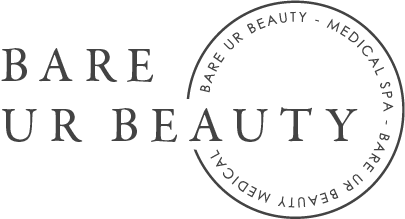Explaining Chemical Peels and What You Can Expect
Have you ever wondered what goes into a chemical peel treatment? Do the words chemical and peel when it involves your face freak you out a little? No worries! We’ve got you covered. If you’re unfamiliar with this popular service and unsure if it’s right for you, here’s some more information on what it does and what you can expect!
FIRST THINGS, FIRST. WHAT IS A CHEMICAL PEEL?
A chemical peel is a facial service that can help to improve and smooth the texture of your skin. It is done by applying a chemical solution to your skin which will then help to remove the outermost layers of your skin and reveal the new skin underneath.
SO WHAT’S THE POINT OF THIS TREATMENT?
Since a chemical peel is basically resurfacing your skin, it can be a great service to help treat the appearance of fine lines, wrinkles, scars, acne and uneven skin tone.
But beware. Not all chemical peels are made the same. They come in different acid strengths which can produce very different results! Let’s break it down:
Light - A light chemical peel removes the outer layer of your skin (the epidermis) and is used to treat fine wrinkles, acne, uneven skin tone and dryness. This can be done every two to five weeks depending on your skin type.
Medium - A medium chemical peel removes the skin cells from the epidermis all the way down to the upper part of your middle layer of skin (the dermis). This strength of peel is often used to treat wrinkles, acne scars and uneven skin tone.
Deep - A deep chemical peel removes skin cells even deeper into your dermis. This normally doctor recommended for deeper wrinkles, scars or precancerous growths.
WHAT WE USE
At Bare Ur Beauty we use Danné Montague-King (DMK) Pro Alpha, Six-layer Peel, and Alkaline washes with a variety of other options depending on your skin type.
AFTERCARE AND WHAT TO EXPECT
While a chemical peel is technically non-invasive, it does require a healing period after the treatment has been completed. With the initial 72 hours post-procedure being the most critical! Here are some tips to make the most of your recovery:
Hands off and let it peel - Once your dead skin starts to shed, avoid touching or picking and let it shed off naturally. Do not peel the skin off as this can lead to possible scarring! This includes all facial scrubs, acids and electric cleansing brushes, etc.
Moisturize and use SPF - After receiving a chemical peel, your skin will be sensitive so we advise against using the same products you normally use in your skin care regime. We suggest only using sunscreen (30 or higher) and a hydrating moisturizer as they can help keep your new skin hydrated and protected. But be sure not to rub them in so you don’t interfere with the peeling process!
While a chemical peel can be highly effective, it might not be what’s right for you and your skin care journey. Perhaps not yet anyway. Building integrity within the skin so it can handle stronger treatments is what we’re all about so make sure you schedule a consultation with us to see if a chemical peel is an option for you!
